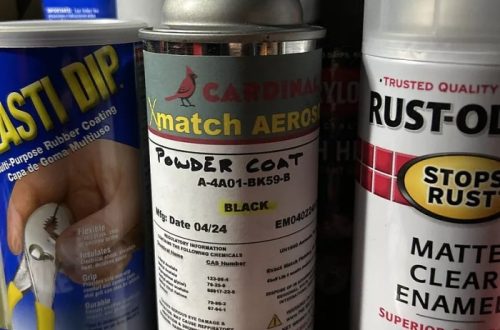Overview of the Erlenmeyer Flask
Erlenmeyer flasks are a hallmark of the laboratory environment, bearing a distinct conical design that enables a myriad of scientific endeavors. These flasks are fundamental in chemistry and biology labs across the globe due to their versatility and unique construction, tailored to the tasks at hand. Developed by the German chemist Emil Erlenmeyer in the late 19th century, the flask has sustained its importance over the years by adapting to the ever-changing landscape of laboratory science.
Design and Characteristics
The recognizable architecture of an Erlenmeyer flask includes a broad, stable base, a tapered conical body, and a cylindrical neck. This shape is crucial: the expansive base ensures stability while the conical design facilitates efficient mixing of contents with minimal risk of spillage. The narrow neck serves to limit evaporation and prevent the ingress of contaminating particles, making it an optimal choice for reactions requiring precision and cleanliness.

Material Varieties: Glass vs. Plastic
When it comes to composition, Erlenmeyer flasks can be constructed from glass or plastic, each offering its own advantages. Glass is preferred due to its resistance to thermal shock and chemical corrosion. It is chosen for its clarity, durability, and non-reactive properties. Plastic flasks are typically made from polypropylene or polycarbonate. They offer shatter resistance and are lightweight, which can be advantageous in certain laboratory conditions where breakage or weight is a concern.
Sizing and Volume Options
The range of sizes available for Erlenmeyer flasks makes them incredibly versatile for a wide range of laboratory applications. The availability of different volumes ensures the right flask can be chosen for each application. For small-scale experiments, the smaller sizes of Erlenmeyer flasks, such as 25mL or 50mL, are ideal for conducting tests with limited quantities of reagents. These smaller flasks are particularly useful for carrying out precise measurements and observations. They offer the necessary containment without excess space that could lead to inaccuracies.
On the other hand, for larger-scale industrial processes, Erlenmeyer flasks with capacities of several liters are invaluable. These larger flasks provide ample space for mixing, heating, and accommodating larger volumes of samples or reagents. They are commonly used in bioprocessing, fermentation, and other industrial applications where the volume of the reaction or culture requires a substantial vessel.
The selection of an appropriately sized Erlenmeyer flask is vital. It ensures that there is sufficient space for the intended tasks without the risk of overflow or inadequate containment. In addition, the right-sized flask can help to minimize wastage of materials. It also promotes efficient mixing and reduces the likelihood of accidents or spillages during laboratory procedures.

Applications of Erlenmeyer Flasks
The Erlenmeyer flask is not just a symbolic emblem of the laboratory; it’s a versatile tool with a spectrum of applications that leverage its unique design. Here, we explore the different ways an Erlenmeyer flask can be used in modern laboratories to facilitate scientific advancement.
Mixing and Preparing Solutions
In laboratory settings, properly mixing and preparing solutions is fundamental. Erlenmeyer flasks, with their conical shape, facilitate easy swirling of contents. This is vital for dissolving solids and obtaining uniform solutions. The tapered design also minimizes the risk of spillage during vigorous shaking or mixing, making this type of flask particularly useful for experiments that involve combining reagents.
Culturing Microorganisms
In addition, the conical shape of Erlenmeyer flasks allows for efficient mixing and aeration of the culture medium. This promotes the growth and proliferation of microorganisms. This shape also enables easy pouring and decanting of liquids, facilitating the transfer of cultures or media without the risk of contamination.
The high-quality borosilicate glass construction of Erlenmeyer flasks is also advantageous in microbiological research. It ensures that the flask can withstand the autoclaving process for sterilization without shattering, providing aseptic conditions for the growth of pure cultures.
Moreover, the transparency of the glass allows for easy monitoring and observation of the culture, facilitating visual inspections and measurements of growth parameters such as turbidity or cell density. The graduated markings on the flask further aid in accurate measurements and volume control.

Conducting Titrations
Additionally, Erlenmeyer flasks are made from high-quality borosilicate glass. This makes them resistant to thermal shock and chemical corrosion. This is essential for the accurate and reliable results of titrations. The graduations along the side of the flask also make it easy to measure and record the volume of the solution being titrated. The wide base of the flask provides stability, minimizing the risk of accidental spills or breakage.
Overall, Erlenmeyer flasks are an ideal choice for conducting titrations, as they provide the necessary features to ensure accurate and precise results, making them a valuable tool in the field of analytical chemistry.
Fermentation Processes
The use of Erlenmeyer flasks in biotechnology for fermentation experiments is also due to the ease with which they can be sterilized and their ability to support the growth of microorganisms. The flasks can be autoclaved, ensuring that they are free from any potential contaminants before the fermentation process begins. This is crucial for maintaining the purity of the culture and obtaining accurate results.
The sealable neck of the Erlenmeyer flask is particularly beneficial for creating the anaerobic or microaerophilic conditions required for fermentation. By using a specialized stopper or cap, the level of oxygen can be precisely controlled, allowing for the optimal growth and metabolic activity of the microorganisms involved in the fermentation process.
Furthermore, the Erlenmeyer flask’s shape provides an ideal environment for efficient mixing and aeration of the fermentation media. This promotes the growth and activity of the microorganisms. The graduated markings on the flask enable accurate measurement and monitoring of the fermentation process. This includes parameters such as growth kinetics, metabolite production, and biomass yield.

Crystallization Experiments
Chemists commonly use Erlenmeyer flasks in crystallization experiments. The transparent nature of glass flasks allows for the easy observation of crystal formation. Additionally, the flasks can be gently heated to dissolve solids and then cooled slowly to encourage crystal growth, a process made safer by the thermal resistance of the borosilicate glass typically used in their manufacture.
Selecting the Right Erlenmeyer Flask
Choosing the correct Erlenmeyer flask is vital for the success of various laboratory procedures. This choice should be informed by an understanding of the flask’s properties as related to the intended use. Laboratory professionals consider multiple factors which influence the efficiency, accuracy, and safety of their work.
Factors in Flask Selection
When deciding on an Erlenmeyer flask, several factors must be taken into account:
- Material: Whether a flask made of glass or plastic is more appropriate for the task at hand. Glass is best for high temperatures and reactive chemicals, while plastic is more durable and shatterproof.
- Size: The volume of the flask should be chosen based on the quantity of liquid used and the need for agitation space to avoid spillage.
- Graduation: Clearly marked graduations are essential for measuring liquids. Flasks with molded graduations offer more durability and clarity over time than those with printed markings.
- Sterility: For cell culture and other sensitive experiments, sterility is key. Pre-sterilized flasks can save significant time and reduce contamination risks.
- Cap Style: The choice between vented and non-vented caps depends on the need for gas exchange or a completely sealed environment.
- Usage Requirements: This encompasses environmental conditions, chemical resistance, clarity, and potential for autoclaving.
Types of Erlenmeyer Flasks
There’s a wide variety of Erlenmeyer flasks to choose from, each tailored to specific lab applications:
- Glass Erlenmeyer Flasks: Made from borosilicate for thermal resistance; best for visual clarity and chemical reactions.
- Plastic Erlenmeyer Flasks: Lighter and less fragile; often used when breakage is a concern or in field applications.
- Vented Cap Flasks: Ideal for cultures requiring oxygenation; prevent pressure buildup in fermentation studies.
- Non-Vented Cap Flasks: Prevent contamination and evaporation; used for long-term storage or sensitive incubations.

Advantages of Different Cap Styles
Cap styles contribute to the functionality and safety of Erlenmeyer flasks in different settings:
- Vented Caps: Allow for proper gas exchange in aerobic cultures and are essential in fermentation processes where gases are a byproduct.
- Non-Vented Caps: Create a more sealed environment, which is suitable for anaerobic conditions or when contamination risk needs to be minimized.
- Baffled Bottom Flasks: Have indentations to enhance mixing efficiency, particularly beneficial for biological applications like growing cell cultures.
Considerations for Baffled vs. Flat-Bottom Flasks
Deciding between a baffled and a flat-bottom flask depends largely on the nature of the experiment:
- Baffled Bottom Flasks: Preferred when thorough mixing is required as they disrupt the formation of a vortex, leading to more effective blending of solutions and cultures.
- Flat-Bottom Flasks: Better for applications demanding stability on flat surfaces, like magnetic stirrers, and are reliable in high-throughput automated systems.
Selecting the right Erlenmeyer flask entails balancing these considerations with the intended application to achieve the best experimental outcome possible.




